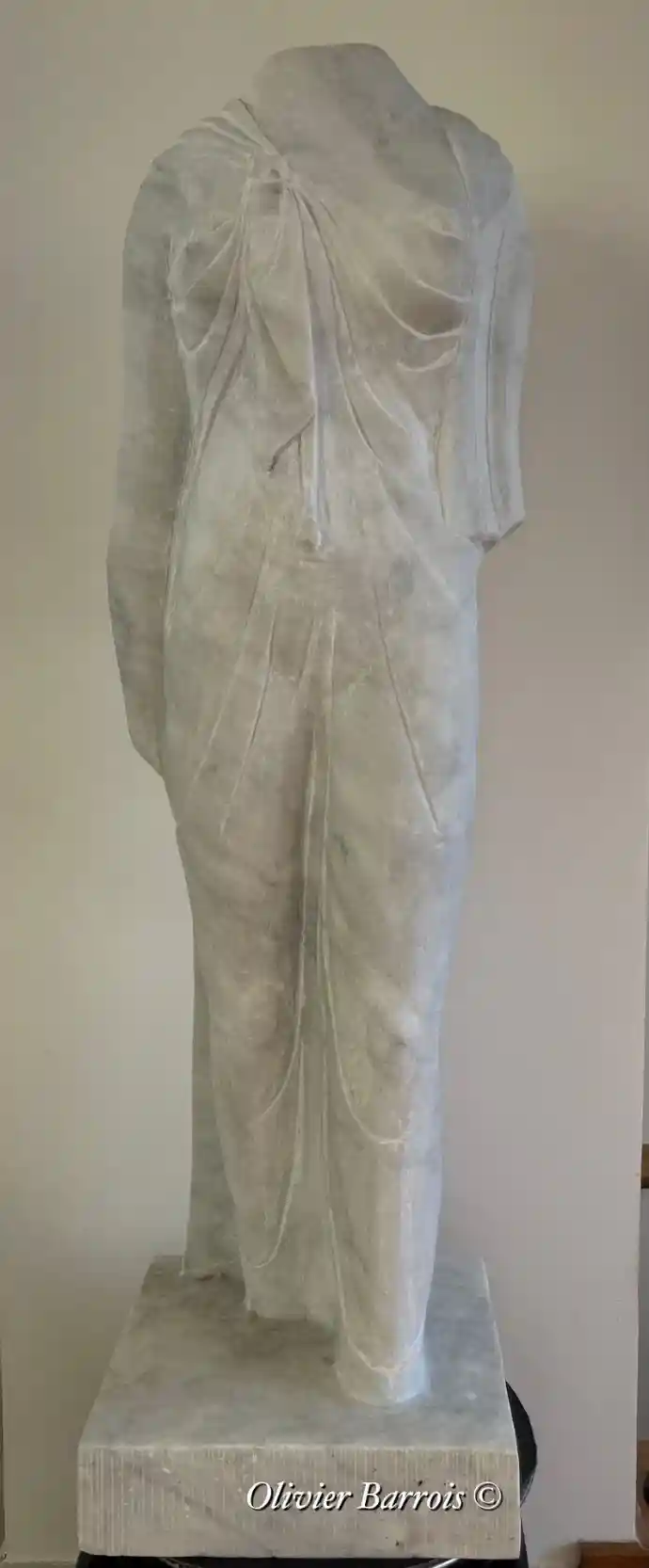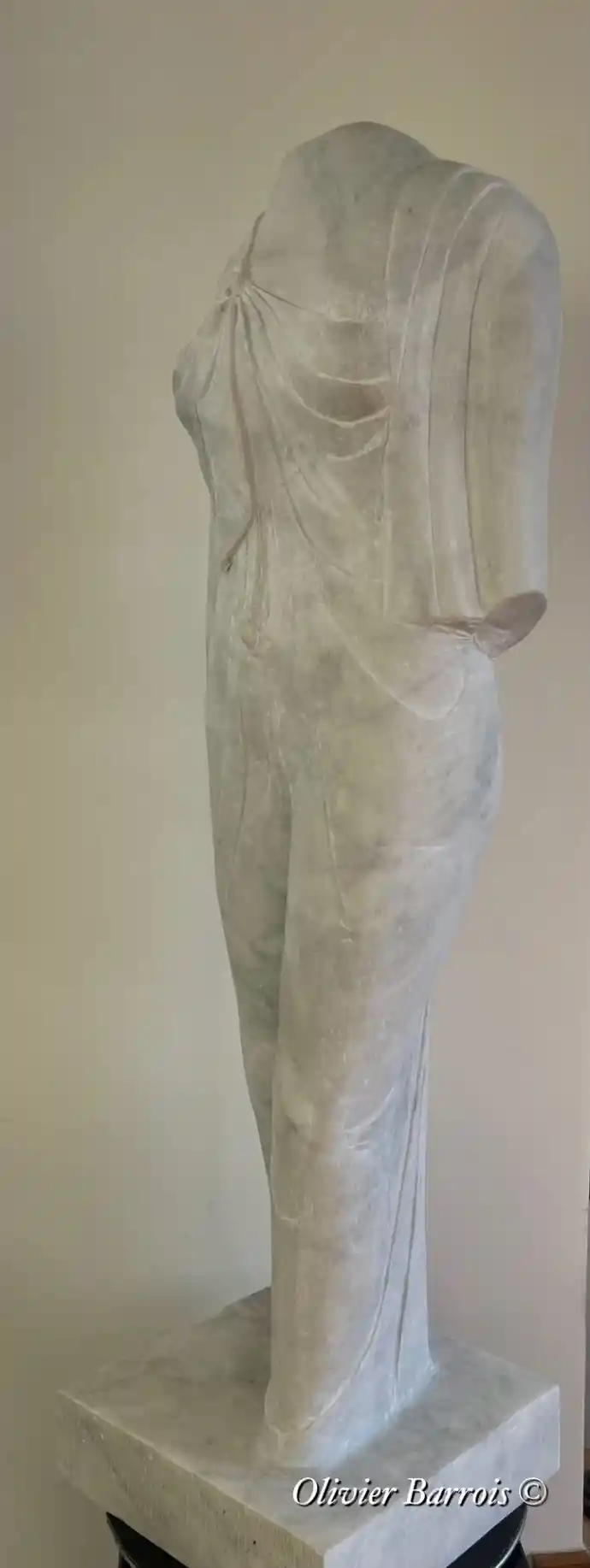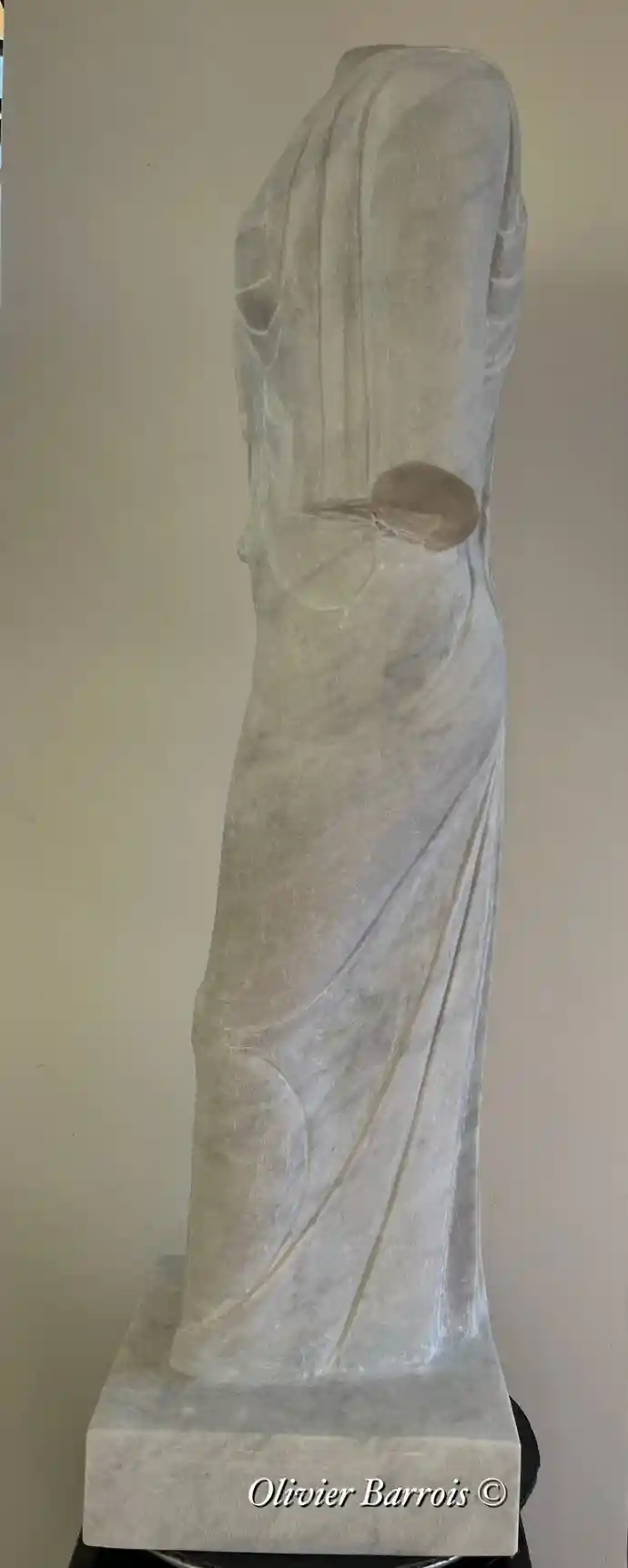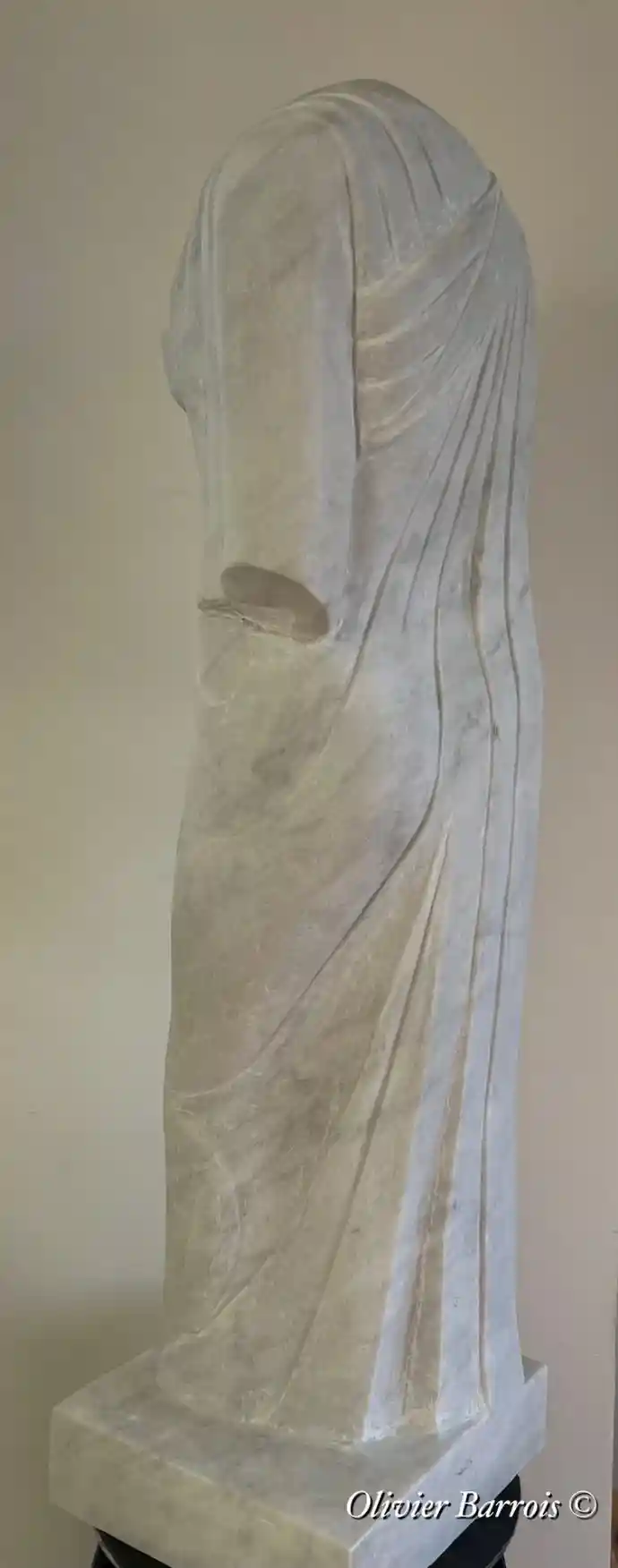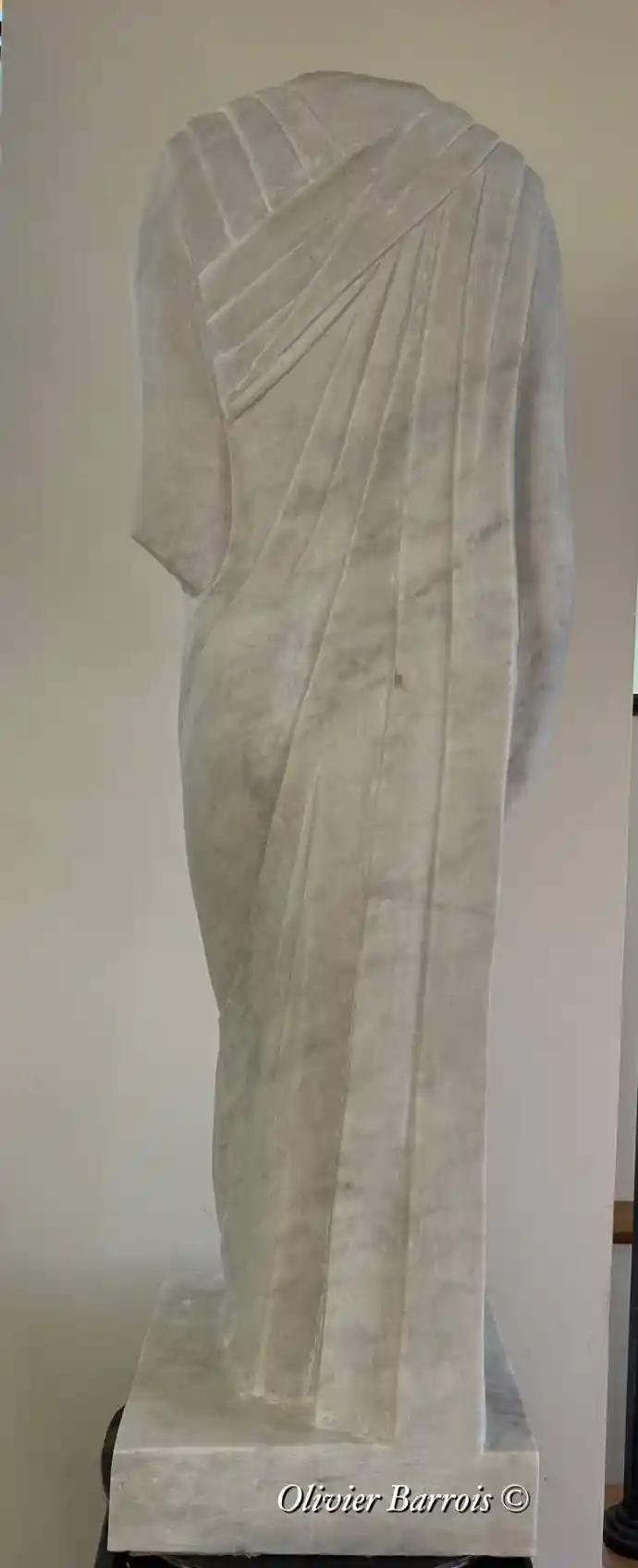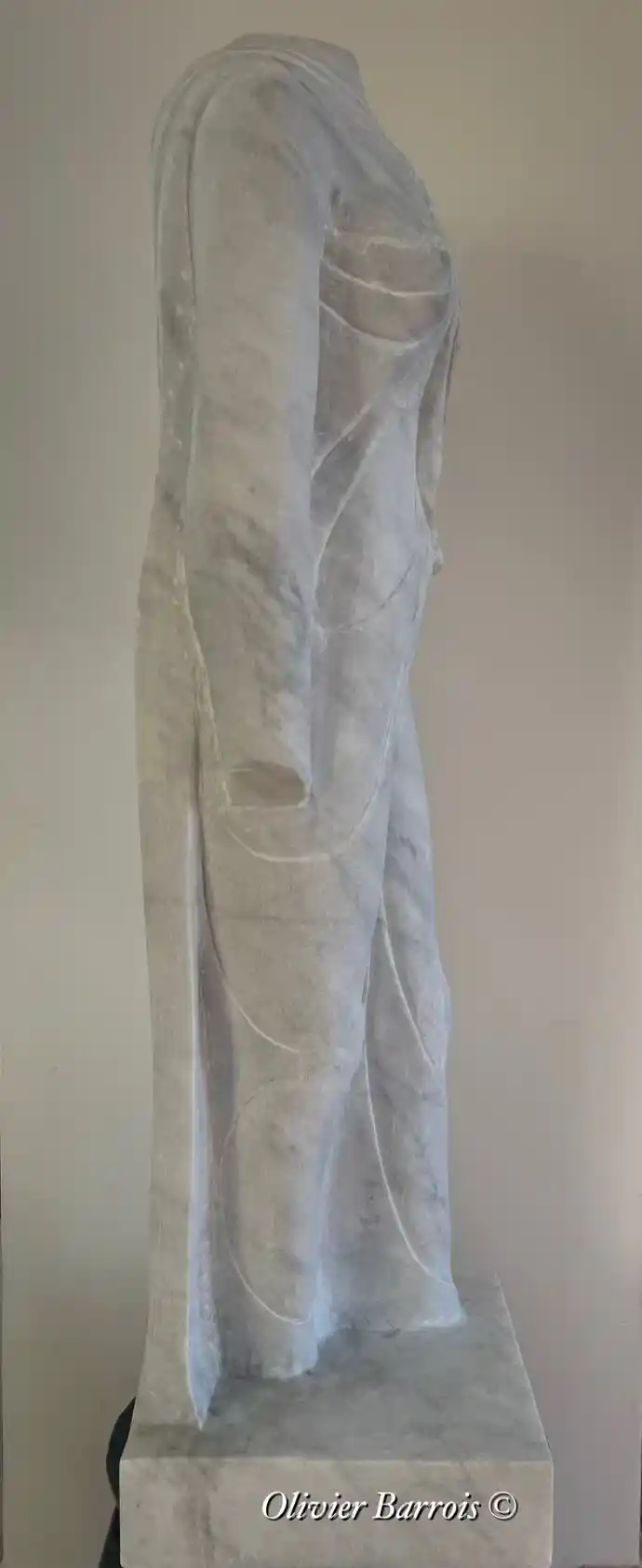Suggestive
My personal reinterpretation in white Carrara marble of an ancient black granite statue of Arsinoe II, Queen of Egypt from the 3rd century BC.
Indeed, it was a huge aesthetic shock for me when this ancient statue, submerged for 2,000 years, was discovered at the bottom of the sea off the coast of Alexandria and then exhibited at the Grand Palais in Paris.
A knot joining the two ends of the shawl – and which is also found on many statues of Ptolemaic sovereigns – is placed above the right breast. Since the wives and mothers of the heir to power at that time sought to assimilate themselves to the goddess Isis, wife of Osiris and mother of Horus, archaeologists refer to this knot as the “Isis knot”. Thus, this statue is probably a representation of a sovereign of the Ptolemaic period.
The treatment of the fabrics, which mould the body, recalls the marble works of Hellenistic artists representing the goddess Aphrodite, dressed in a wet drape. The folds therefore undress the person more than they dress her. According to legend, the goddess Aphrodite was born from the foam of the sea on the Cypriot shore. We therefore immediately think of the queen considered to be the incarnation of Aphrodite on Earth: Queen Arsinoe II, wife of Ptolemy II.
Marble work entirely by hand, no mistakes possible...
